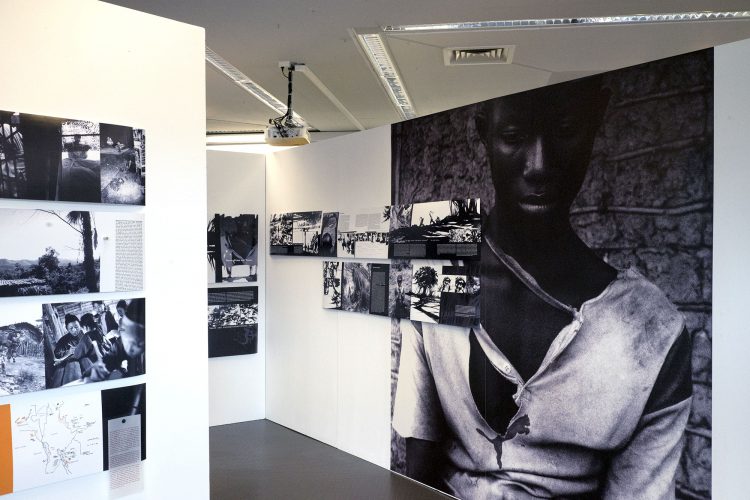BLACK.LIGHT PROJECT
„Death in the Shadows“
Frankfurter Allgemeine Zeitung, 14. January 2012
Andreas Platthaus
“
At the beginning of 2011, everything appeared to be going well, both with the project and the financing. Things were progressing quickly, and, upon first glance, “Black.Light” looked even better than one could have expected a year ago. But now there’s money trouble, even though 10 leading illustrators are currently working on “Black.Light.”
It’s so typical: Initially, leading artists and journalists are quick to show an interest for the desperation in the world’s nether regions. They develop a concept to bring together not only the most disparate forms of storytelling, but also people from north and south, from wealth and poverty, from light and shadow. Then, out of nowhere, the genesis of something spectacular suddenly draws the focus of attention and the financial means to something much more appealing, because we prefer to document beauty instead of ugliness, to show that which puts us in a good light instead of what our shadows are. Now, there is no more interest in “Black.Light” because that something spectacular is last year’s Arab Spring. But what does it have to do with Black.Light?
First, one has to ask: What is Black.Light? Simply posing the question speaks volumes about the problems of the project. Normally, one would think a cross-border and cross-discipline concept for presenting human tragedy through a combination of artistic and documentary styles would stir interest and attract support. But during the time in which the tragedy played out – 1989 to 2007 – it was given short shrift outside of Africa. Fighting in the successor states of Yugoslavia, the Middle East conflict and two Iraq wars were more than just competition for publishing space: They made the West blind to the horrors in regions that are merely on the periphery of its spheres of interest. So much is true for areas like West Africa.
From 1989 to 2007, Charles Taylor defined life in that part of the world. The Liberian warlord carried the power struggle for his homeland to neighboring states before actually becoming president of Liberia following the 1997 civil war. Once in office, he fomented a second civil war and further international conflicts. International pressure forced his resignation in 2003, he was extradited from his exile in Nigeria in 2006, and in 2007 he found himself charged with war crimes in Sierra Leone by a U.N. Special Court in The Hague. The trial against the man who once set West Africa aflame in still underway. Black.Light tells the story of the effects of Taylor’s actions.
…
“
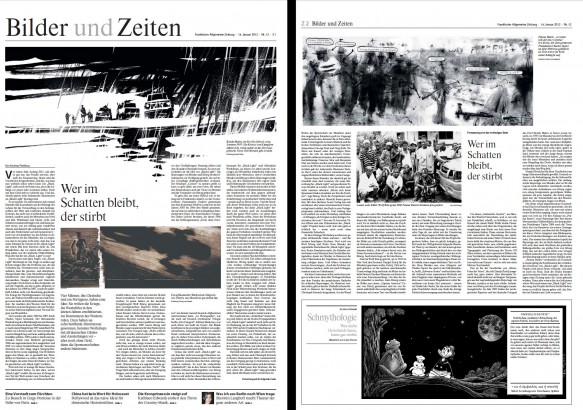
![]() Read full story at Melton Prior Institut for reportage drawing & printing culture
Read full story at Melton Prior Institut for reportage drawing & printing culture

AWARD and NOMINATION
…
awarded
culture prize 2016 of the Evangelical Lutheran Church Hannover
…
nominated
2014 and 2015 Kolga Photo Award for best annual reportage
German Human Rights Film Award 2014
Marion Dönhoff Award for international understanding and reconciliation 2011
ANIMATION
ANIMATION „REPORTING VIOLENCE“
“ …
Details anchor reality. A boy’s name, Morie. The specific that he and only he survived a village massacre, 1,200 dead. He remembers that also the dogs, goats, and chickens are dead, as well. A man describes learning how to drink water like a dog after his arms were cut off, a specific visual analogy, we can picture this. We weren’t there, but we can picture it. And that bridge, as abstract, as intangible as it is, means something. A film impacts the mind and the heart. And short of clasping hands with another, it is one of the most powerful ways to tell a story. The Black.Light Project does not necessarily explain or eulogize. In the combination of languages of the visual, literary, and aesthetic it choruses against silence, against forgetting, casting a rope to faith in humanity, in memory, in consciousness, to faith in what’s left.
“
Kirsten Rian
PUBLICATION
BLACK.LIGHT PROJECT
MAKING OF
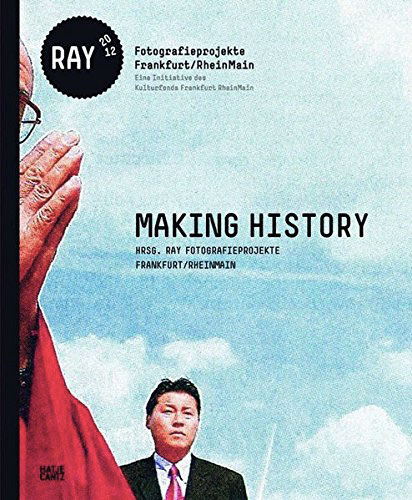
EXHIBITION “RAY 2012 – MAKING HISTORY“
making-of Black.Light project at the Museum of Modern Art / Frankfurt, Germany
April – June 2012
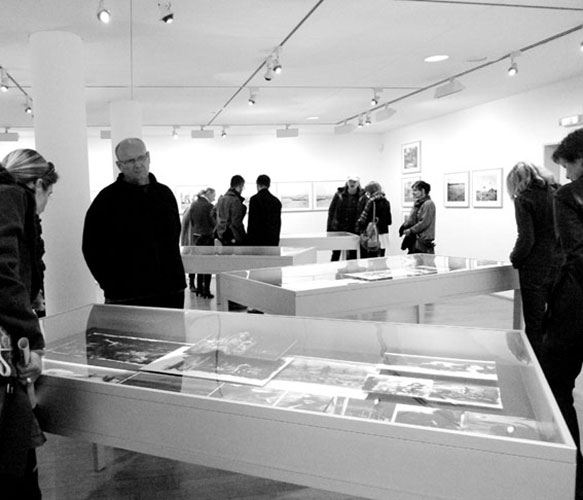
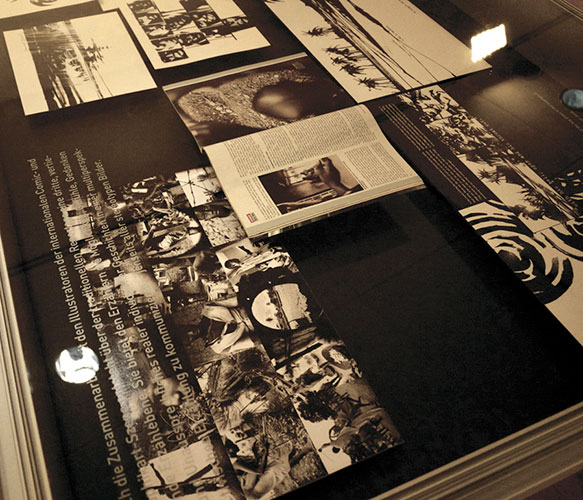
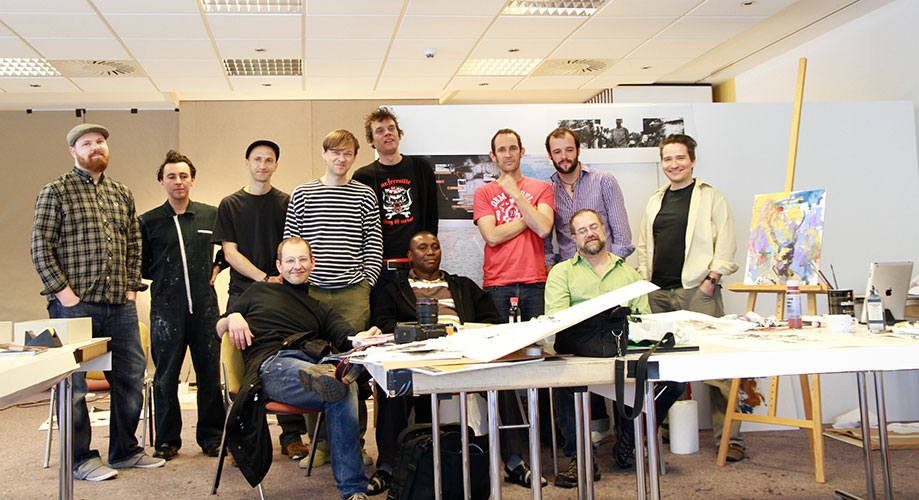
WORKSHOP WITH ILLUSTRATORS AND EYEWITNESSES
Five-day-workshop at the Comic Salon Erlangen 2012 with intiators, illustrators and eyewitnesses
Under the label “The Charles Taylor Wars,” Wolf Böwig (initiator, photo), Pedro Rosa Mendes (text), Christoph Ermisch (initiator, graphics, animation) and an international lineup of top illustrators and artists created a crossover version of the reports, merging photography, illustration and written word. Through the collaboration of photographer, artists, author, graphic artis as well as eyewitnesses, Black.Light Project creates the fragments for 15 different stories during a workshop at the Comic Salon in Erlangen 2012
3SAT KULTURZEIT
26th June 2012
“ … Adorno meinte über Auschwitz könne man keine Gedichte schreiben, Leon Wieseltier, der Kulturredakteur der jüdischen Zeitschrift The New Republic sagte, seine Vorstellungswelt höre an den Türen zu den Gaskammern auf. Wenn wir uns schlimmstes Grauen nicht vorstellen sollen, es uns verschlossen bleiben muss aus Pietät mit den Opfern, dann wird es vergesssen.
Wie überlebt man ein Massaker, bei dem alle brutal ermordet werden? Die Mutter, der Vater, Bruder, Schwester und Nachbarn. 1200, alle tot. Nur einem lassen sie leben. …
Das Massaker fand statt in Sierra Leone, in Westafrika. Angezettelt von bis heute Unbekannten. Zeitgleich wütete der verurteilte Massenmörder und Warlord Charles Taylor in der Region. Manche konnten solche Traumata überleben, vielleicht weil es doch Menschen gibt, die versuchen über das Schreckliche Gedichte zu schreiben. Oder im Falle des Projektes Black.Light Comics zu machen. … „
Tina Mendelsohn

PHOTOFESTIVAL LAGOS
exhibition and performance
Nigeria
October 2012
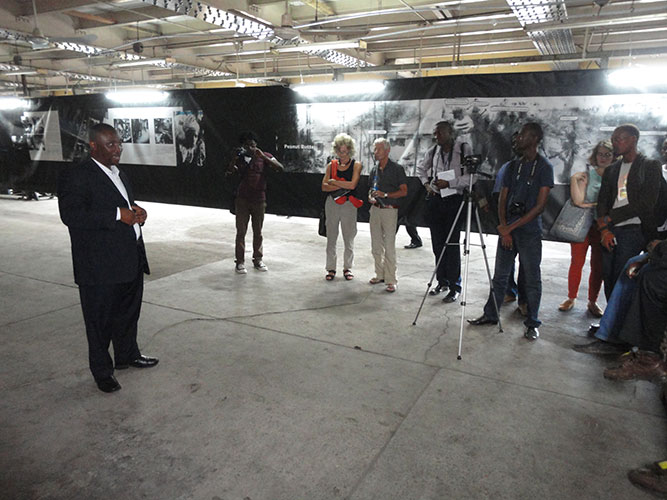
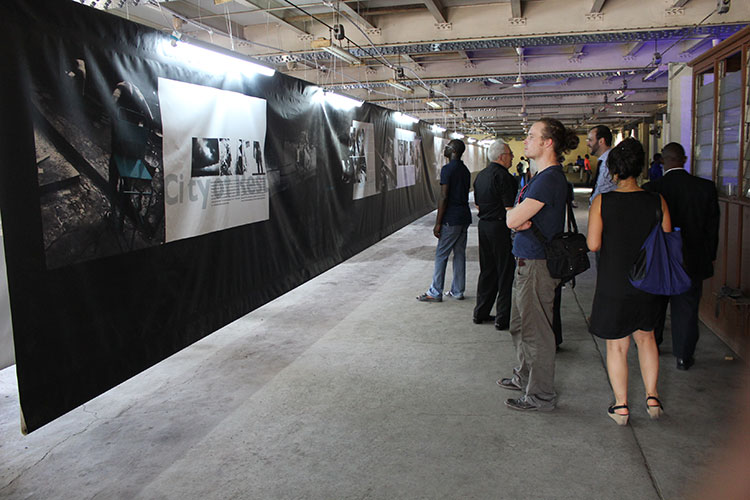
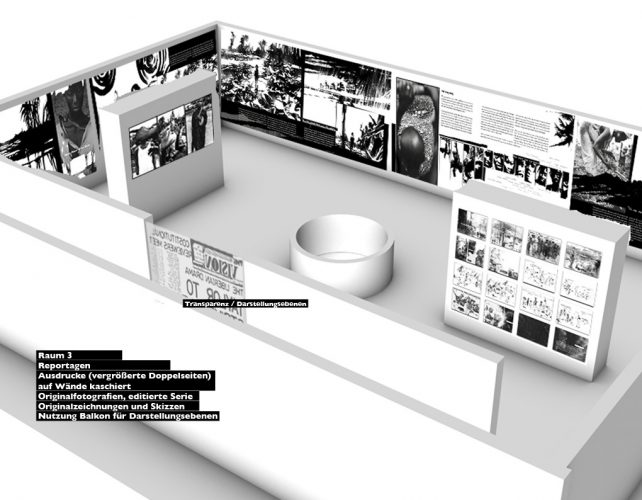
AUSSTELLUNGSKONZEPT
Wilhelm Busch – Deutsches Museum für Karikatur und Zeichenkunst
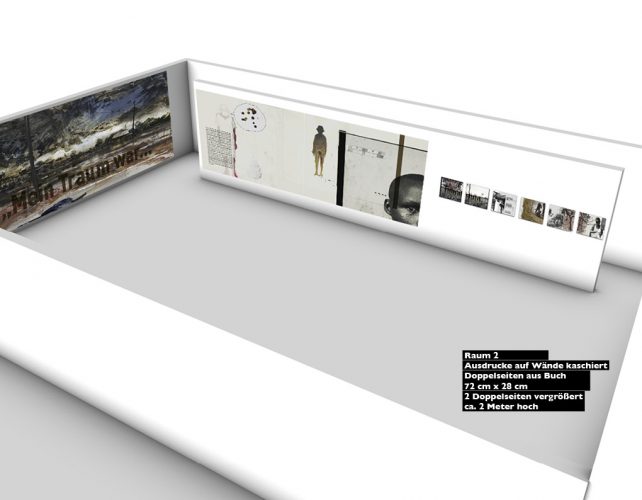

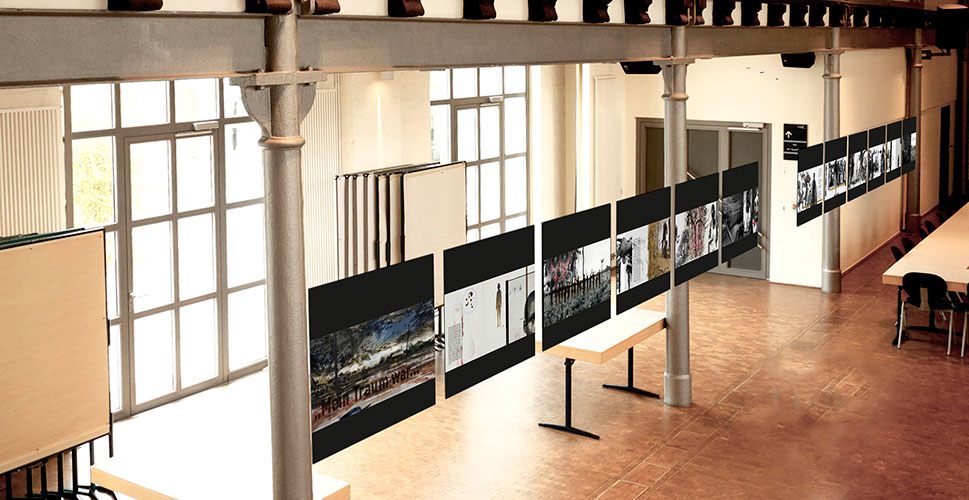
“VIOLENCE AND HUMAN RIGHTS – APPROACHES THROUGH HISTORY AND ART”
Black.Light Project was featured during the international conference
“Violence and human rights“ held December 9th-11th, 2013, in Hannover. The event was organized by the Foundation of Memorial Sites of Lower Saxony
THE RIGHT ON HISTORY – terror and reflection in Russia and Europe
Dr. Irina Scherbakova (lecture)
BLACK.LIGHT PROJECT
Wolf Böwig (lecture and presentation)
Henning Chadde (performance)
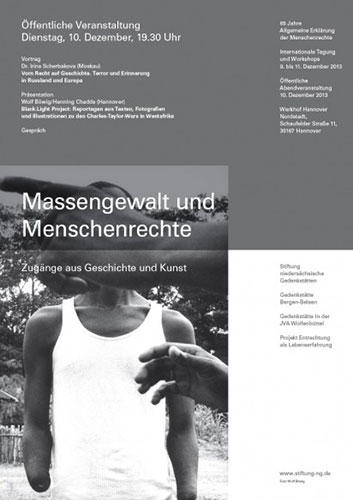
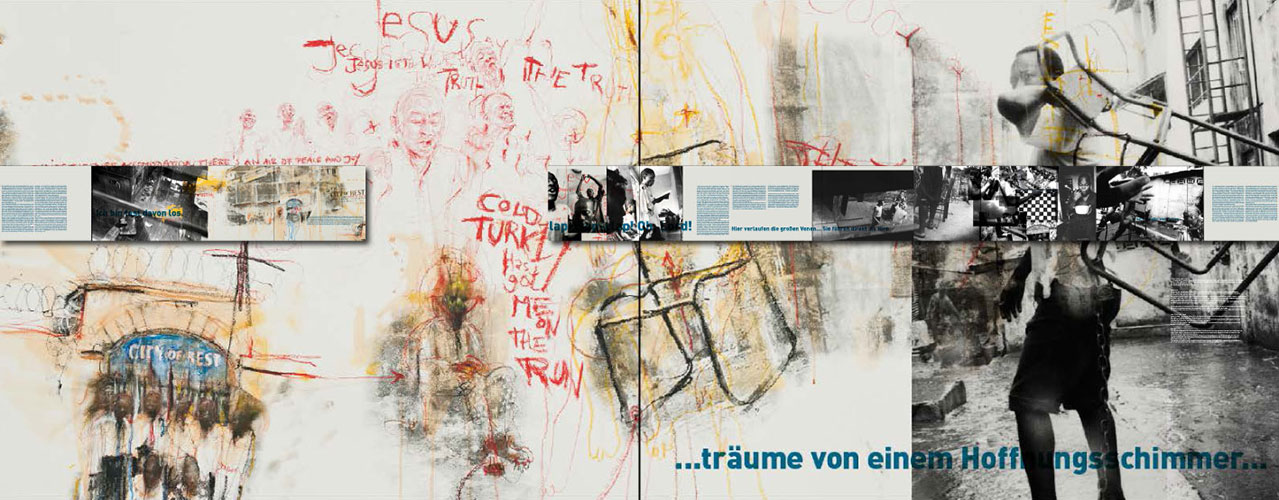
NOORDERLICHT PHOTOFESTIVAL 2014
exhibition “an ocean of possibilities”
Fries Museum
Leeuwarden, Netherlands
September/October 2014

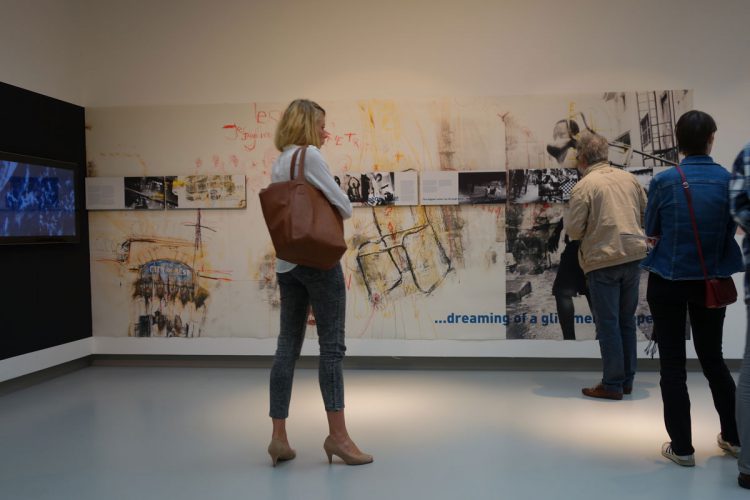

“YOUR STORY! GESCHICHTEN VON FLUCHT UND MIGRATION”
vom 13. Mai bis 5. November 2017
Emden ist für 2017 als eine “Reformationsstadt Europas” ausgezeichnet worden und stellt in einem umfangreichen Programm das aktuelle Thema der Migration in den Mittelpunkt. Die Stadt gehörte im 16. Jahrhundert neben Genf und Wittenberg zu den wichtigsten Stätten der Reformation, da es Tausende von Glaubensflüchtlingen aus den benachbarten Niederlanden während des spanisch-niederländischen Kriegs (1568–1648) aufnahm. Die Ausstellung Your Story! will Raum geben für Darstellungen individueller Geschichten der Flucht und Migration in der modernen und zeitgenössischen Kunst.
Kunsthalle in Emden


„KRIEGSPASSAGE 1“ – 38. ERLANGER POETENFEST 2018
vom 23. bis 27. August 2018 beim 38. Erlanger Poetenfest 2018
“
… Das „Black Light Project“ von Wolf Böwig hat eine Verbindung zu Erlangen: Im Rahmen des 15. Internationalen Comic-Salons 2012 lud Wolf Böwig renommierte Comic-Künstler und Illustratoren ein, zu seinen Fotos und den Texten von Pedro Rosa Mendes zu zeichnen. In einem offenen Atelier konnten die Besucherinnen und Besucher bei der Entstehung des Projekts zusehen und mit Father Garrick, einem Zeitzeugen aus Sierra Leone, persönlich ins Gespräch kommen. Die Ausstellung im Rahmen des 38. Erlanger Poetenfests zeigt nun einige der Ergebnisse, unter anderem von David von Bassewitz, Benjamin Flaó, Dieter Jüdt, Thierry Van Hasselt und Danijel Žeželj. …
“
Ausstellung „Kriegspassage“
